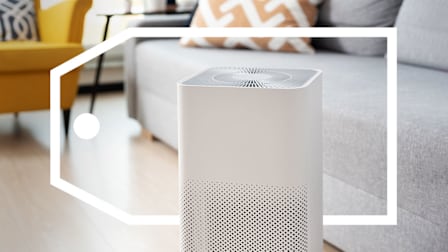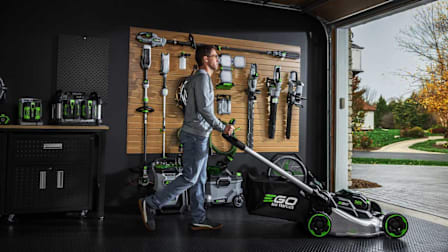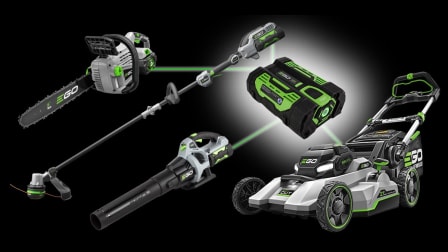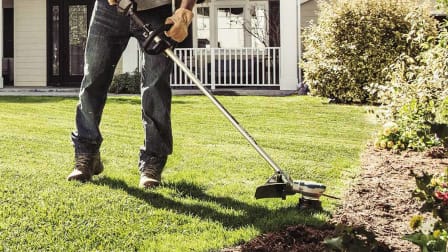String Trimmer Won’t Start? Try This.
Here are three common fixes for a fussy gas string trimmer (plus tips for stubborn battery models, too)
When you shop through retailer links on our site, we may earn affiliate commissions. 100% of the fees we collect are used to support our nonprofit mission. Learn more.
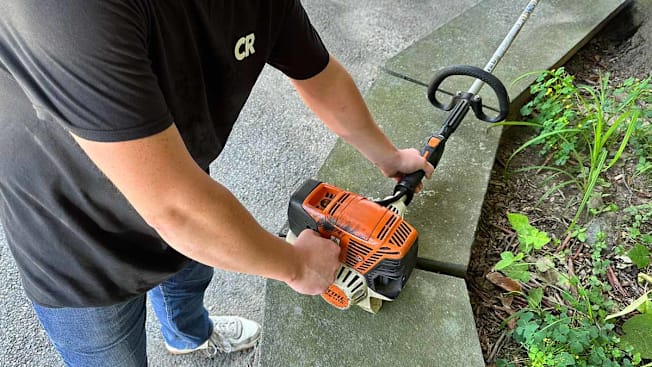
String trimmers get into spots your mower just can’t reach. These tools, sometimes called weed whackers, are also famously tough to start, particularly if they’ve been in storage all winter.
Because the vast majority of starting problems concern gas-powered string trimmers, the bulk of this article will focus on these machines and the components needed to make them work. Issues related to battery string trimmers are much less common; you can read more about possible solutions at the end of this article.
What to Do When Your Gas String Trimmer Won't Start
Gas-powered string trimmers run on internal combustion engines, a lot like cars. And much like your car, they need three things to work properly: fuel, oxygen, and a spark. Fuel, of course, comes in the form of gasoline, while the tools draw oxygen from the air. The spark is provided by a spark plug, which ignites the mixed air and gas inside the engine, causing the tool to run and generate the power to spin the trimming head. A problem starting the string trimmer is almost always traced back to one of these three elements. Here’s the best way to inspect each of them.
Fuel and Fuel Filter
If your string trimmer won’t start, look at the fuel system first. Start by making sure the tank is filled with fresh gasoline, ideally no more than 30 days old. That’s because gasoline usually contains ethanol, which can cause it to degrade over time.
Photo: Paul Hope/Consumer Reports Photo: Paul Hope/Consumer Reports
Air Filter
If the fuel system seems fine, check the air filter. The air filter is often hidden behind plastic housing outside the engine compartment, and usually you just press a plastic tab or two for access. With the housing removed, take out the air filter. On some models, it may look like a small matchbook-sized version of the filter from your car or furnace. On other models, the air filter can look like a ring of foam. Inspect it for any clogs or blockages, and consider replacing it annually for peak performance. Again, you’ll find model-specific air filters at home centers and hardware stores.
Photo: Paul Hope/Consumer Reports Photo: Paul Hope/Consumer Reports
Spark Plug
The final culprit may be the spark plug. The spark plug is a porcelain-coated igniter, and yanking the pull cord causes the spark plug to, well, spark. That spark ignites the fuel and air, allowing your string trimmer to run. But over time, spark plugs can get damaged, or covered in crud or grease, which can keep them from sparking.
Photo: Paul Hope/Consumer Reports Photo: Paul Hope/Consumer Reports
Follow the manufacturer’s direction for removing the spark plug. That usually means removing the rubber boot from the plug, and using a special socket wrench that’s sized for the spark plug on your string trimmer. The manufacturer will often specify the size of the socket wrench you should use, and many even sell a special wrench, either on their websites or at home centers, for removing the plug. Grab a replacement plug, too, and install it by reversing the steps you followed to remove the old plug.
What If Your Battery String Trimmer Won’t Start?
If your battery string trimmer won’t start, make sure the trimmer head is on properly and that the battery is fully charged and seated inside the tool. If that doesn’t help, try the battery in another compatible tool from the same brand or try a different battery in your string trimmer. That will tell you whether the tool or the battery is the culprit.
If it’s the battery, check the warranty to see how long it’s covered, and if it is, follow up with either the retailer or the manufacturer. Otherwise, recycle the defunct battery by bringing it to a Lowe’s or Home Depot store. Protect your battery in the future by bringing it indoors over the winter to avoid exposing it to extreme temperatures.
If the tool itself is broken, it likely needs to be serviced or replaced.
3 Reliable String Trimmers
If the above strategies fail to get your string trimmer going, you can take the tool to be professionally serviced. Or if you’d rather replace your string trimmer, the three models below—one gas model, followed by two electric—offer stellar performance and above-average reliability in our member surveys, so they’re less likely to experience problems of any kind, including starting.

















